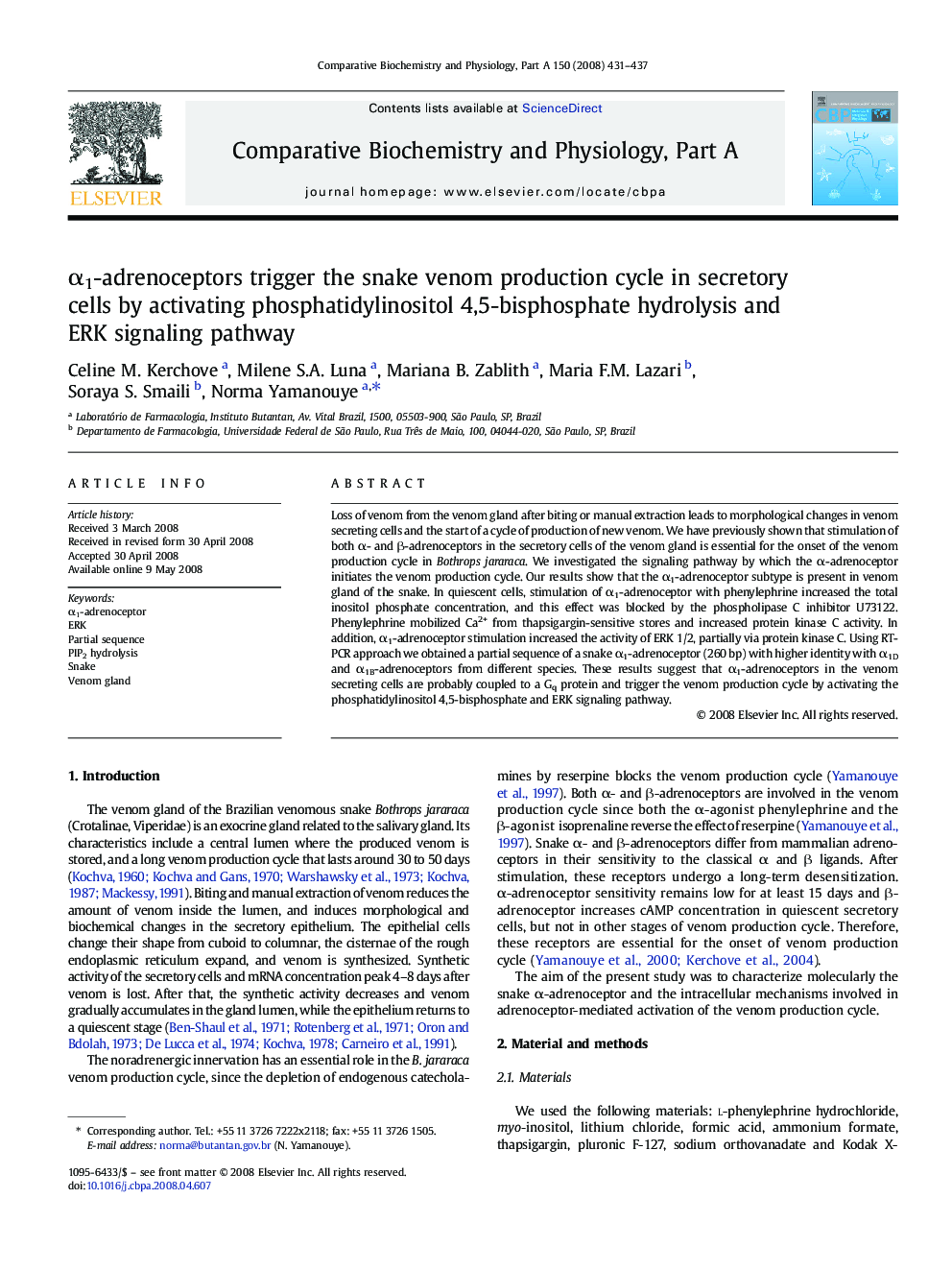| Article ID | Journal | Published Year | Pages | File Type |
|---|---|---|---|---|
| 1974005 | Comparative Biochemistry and Physiology Part A: Molecular & Integrative Physiology | 2008 | 7 Pages |
Loss of venom from the venom gland after biting or manual extraction leads to morphological changes in venom secreting cells and the start of a cycle of production of new venom. We have previously shown that stimulation of both α- and β-adrenoceptors in the secretory cells of the venom gland is essential for the onset of the venom production cycle in Bothrops jararaca. We investigated the signaling pathway by which the α-adrenoceptor initiates the venom production cycle. Our results show that the α1-adrenoceptor subtype is present in venom gland of the snake. In quiescent cells, stimulation of α1-adrenoceptor with phenylephrine increased the total inositol phosphate concentration, and this effect was blocked by the phospholipase C inhibitor U73122. Phenylephrine mobilized Ca2+ from thapsigargin-sensitive stores and increased protein kinase C activity. In addition, α1-adrenoceptor stimulation increased the activity of ERK 1/2, partially via protein kinase C. Using RT-PCR approach we obtained a partial sequence of a snake α1-adrenoceptor (260 bp) with higher identity with α1D and α1B-adrenoceptors from different species. These results suggest that α1-adrenoceptors in the venom secreting cells are probably coupled to a Gq protein and trigger the venom production cycle by activating the phosphatidylinositol 4,5-bisphosphate and ERK signaling pathway.
